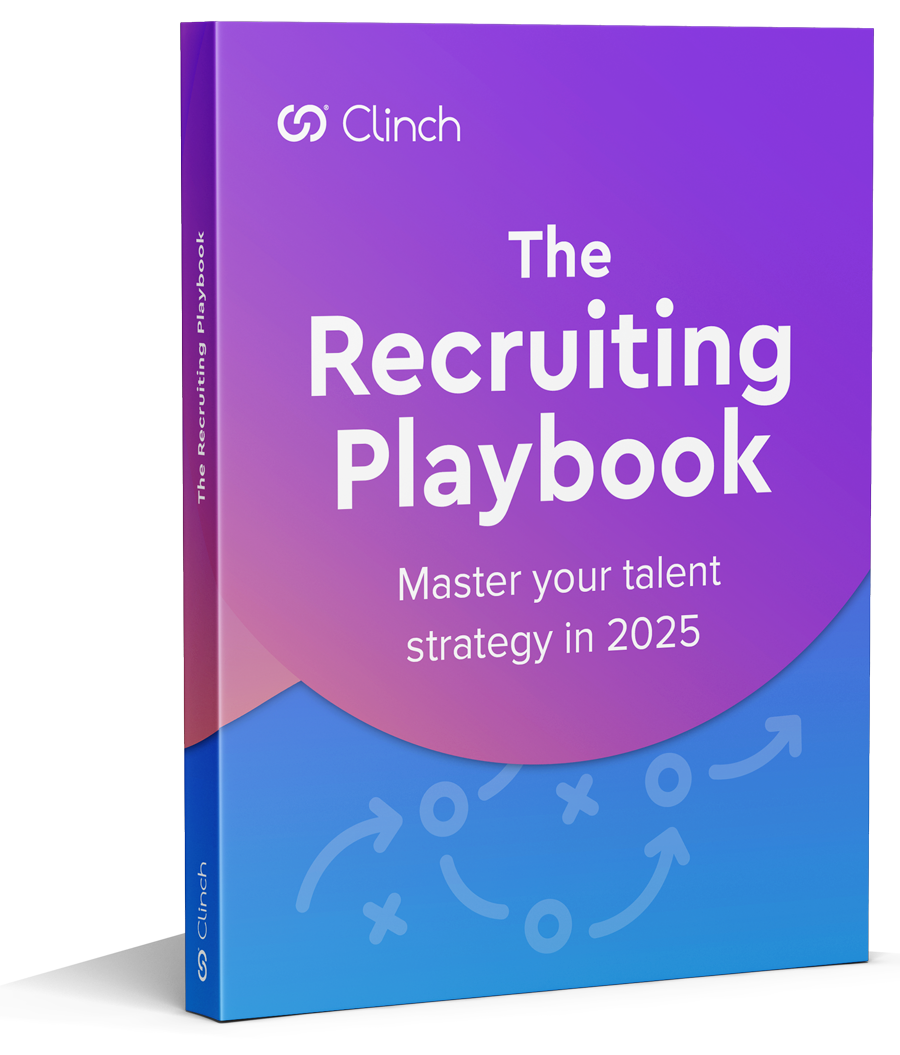Today’s talent teams are increasingly time-poor. In the midst of a long-term skills shortage, top candidates are hard to find —and even harder to secure. As pressure on hiring teams rises, many organisations are heralding Artificial Intelligence (AI) and recruitment automation as tools that will completely reshape the hiring landscape.
This dynamic duo works to streamline processes, boost candidate experience, and give hiring teams more time to focus on key moments throughout the recruitment journey.
But, the devil’s in the details: can these tools live up to the ‘hype’? Let’s break down 2024’s most talked about recruitment trends, to see how talent teams can use AI and automation tools to supercharge their hiring —and flag any pitfalls to avoid along the way.
What is artificial intelligence in recruitment?
When talking about artificial intelligence in recruitment, this can be broadly broken down into two sub-categories: generative and traditional AI.
Traditional AI leans on predefined algorithms, performing tasks within the boundaries set by its programming. This could look like providing targeted job recommendations or assisting with candidate skills matching. Generative AI, on the other hand, leverages the power of machine learning to create content dynamically. It goes beyond rule-based programming, allowing it to adapt, learn, and generate novel outputs. In recruitment, generative AI could be used to craft compelling job descriptions, generate interview guides, and draft candidate communications.
The key differentiator between the two lies in the adaptability of generative AI: it provides a more versatile approach to problem-solving compared to the rule-bound nature of traditional AI. Both can be powerful tools for busy hiring teams. Beyond the time savings, incorporation of AI leads to a better overall candidate experience, and a more efficient and engaging recruitment process.
What is recruitment automation?
Automation in recruitment refers to the use of technology to support administrative or repetitive tasks traditionally handled manually. From job advertising to candidate communications, automation spans various processes, increasing efficiency in the recruitment workflow.
Types of automation tools to support recruitment:
There are a huge range of automation tools available to recruiters today. From initial interest through to interview, offer, and onboarding, automation can handle repetitive tasks and free up hiring teams to provide better overall experiences for candidates. Some examples of automation tools for recruiters include:
- Automated candidate nurture campaigns: Imagine personalised communication at scale—emails or texts tailored to individual candidates based on their behaviour, preferences, and current stage in the recruitment process. Recruitment marketing tools use automation to help talent teams scale up their candidate communications effectively.
- Programmatic job advertising: Talent teams can take total control of their job advertising strategy through data-driven algorithms. These tools ensure maximum visibility of each job ad, and help you choose the best channels for your strategy.
- Workflow automation: This involves the streamlining of recruitment stages by automating repetitive tasks such as sorting applicants, triggering email workflows, and scheduling interviews.
- AI-assisted candidate matching and skill-based assessments: Machine learning algorithms analyse candidate profiles, objectively matching them with job requirements to provide valuable insights for the selection process.
- Talent marketplaces: These platforms, driven by AI algorithms, connect employers with qualified candidates to expedite the hiring process.
- Chatbots: These provide real-time responses, application assistance, and preliminary assessments to enhance candidate engagement and provide a more interactive recruitment journey.
This is only the tip of the iceberg. Recruitment automation has come forward in leaps and bounds over the past few years, with more tools and functionality being released every month.
Why teams use AI and automation in recruiting
Using automation and AI in the recruitment process offers some obvious benefits. It accelerates recruitment timelines, saving time for both recruiters and candidates. Additionally, the incorporation of AI can enhance the personalisation of the candidate journey —through things like targeted job ads or content recommendations. What’s more, automation relieves recruitment teams of routine and time-consuming tasks —in fact, it’s estimated that using AI, activities that take up to 30% of hours worked could be automated. This would empower hiring teams to redirect their efforts toward more strategic and value-driven activities —like building strong relationships with candidates.
When it comes to decision-making, AI provides recruiters with valuable insights and analytics, empowering them to make informed choices based on comprehensive data analysis. The combined impact of these benefits underscores the transformative potential of automation and AI in reshaping the recruitment landscape.
The ethical concerns of hiring with AI
The rise of AI in recruitment is not without its ethical considerations. Instances of biassed or unethical outcomes stemming from algorithmic decision-making have raised concerns among candidates and companies alike. If not meticulously designed and monitored, the learning algorithms may inadvertently introduce biases, impacting the fairness and objectivity of the recruitment process.
Ethical implications also extend to the possibility of job displacement resulting from automation and AI being used more significantly in the workplace —with some experts suggesting that up to 300 million jobs could be lost due to the increased use of this technology. As AI and automation work to streamline processes, companies must consider the ethical implications surrounding these potential job losses and the evolving role of humans in the recruitment landscape.
To address this, many organisations are opting to use AI in a purely supportive capacity, aiming to streamline processes while allowing human recruiters to personalise the hiring experience and make final decisions. According to 87% of executives, the goal is to use AI and automation to amplify human capabilities, not replace them.
At its core, recruitment is about people: it needs to be driven by humans. With too large a reliance on tools and technology, there is a potential risk of losing this ‘human’ touch in the recruitment experience. Striking a balance between technological efficiency, and preserving the human element, is imperative in not only addressing these concerns, but in creating a recruitment landscape that is fair, transparent, and human-centric.
Where to next? The evolving tech and regulatory landscape
As AI technology evolves, so too will the rules and regulations surrounding its use in recruitment —and in the workplace at large. Greater transparency has already been flagged as a focal point, with an emphasis on providing candidates with insight into the recruitment process and how hiring decisions are made. This increased transparency aims to build trust and mitigate concerns related to the ethical use of AI in recruitment.
The future of recruitment is undoubtedly intertwined with the responsible integration of AI and automation. But, striking the right balance between technological advancements, ethical considerations and human-centric hiring will be key to ensuring long-term recruitment success. By leveraging these tools responsibly, talent leaders can not only boost efficiency in their teams but also create a more personalised and engaging journey for candidates. How will your teams leverage these tools in the year ahead?
Interested in learning more about the trends shaping recruitment in the year ahead? Deep dive into our latest report: 11 recruitment trends for 2024. Download your copy today.



